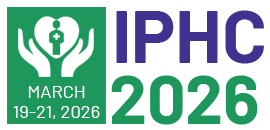Title : Diabetes Mellitus in People Living With HIV AIDS
Abstract:
Background: The rising burden of Non-Communicable Diseases (NCDs) in low and middle-income countries are attributable to increased life expectancy where antiretroviral therapy (ART) and HIV viral suppression have led to increased life longevity. Comorbidities including diabetes mellitus (DM) are of increasing concern among People Living with HIV/AIDS (PLHIV) because they complicate patient management, often leading to poorer health outcomes and increased healthcare costs while most national health systems are not equipped to meet the demands of the primary healthcare and these comorbidities. However, there is paucity of literature on the prevalence of diabetes mellitus in (PLHIV) in Kenya. Therefore, the aim of this study was to determine the prevalence of diabetes mellitus and prediabetes among PLHIV at Marindi Sub County Hospital, Homa Bay County, Kenya.
Methodology: A cross-sectional study was conducted between the months of July 2021 to October 2021. We used World Health Organization stepwise approach to collect sociodemographic and clinical data from 1,595 adult patients from ages 18 to 69 years. Simple random sampling method was used to select the study participants. We measured blood pressure, fasting/random blood sugar as well as anthropometric indicators. DM was defined as fasting blood glucose >7mmol/l, random blood glucose >11mmol/l or PLHIV who were on medication for DM while prediabetes was defined as fasting blood glucose of 5.8-7mmol/l or random blood glucose of 7.8-11mmol/l.
Results: From the 1607 eligible PLHIV, 1595 had complete data and were included in the final data analysis, which gave a response rate of 99%. Out of the 1595, 1051 were female (65.3%) and 544 were male (34.7%). PLHIV who had never had their blood sugar measured by a health worker were 90.78%. The mean age for those with diabetes was 52.9, while mean number of years on ART was 9.9. Prevalence of raised blood glucose was 5.7% while 11.3% had impaired blood glucose (prediabetes). Women with raised blood sugar were more obese at 68.4% than men at 32.0% respectively. Fifty percent of patients with raised blood sugar also had raised blood pressure.
Conclusion: A majority of PLHIV had never been screened for DM. Diabetes was associated with advanced age, increased number of years on ART, raised blood pressure, and obesity. There was lack of systematic screening for DM among PLHIV. This calls for introduction of NCD screening at the time of enrolment into HIV care and regular screening of PLHIV who are already on HIV care to be able to detect DM early enough to make timely interventions and avoid complications.



